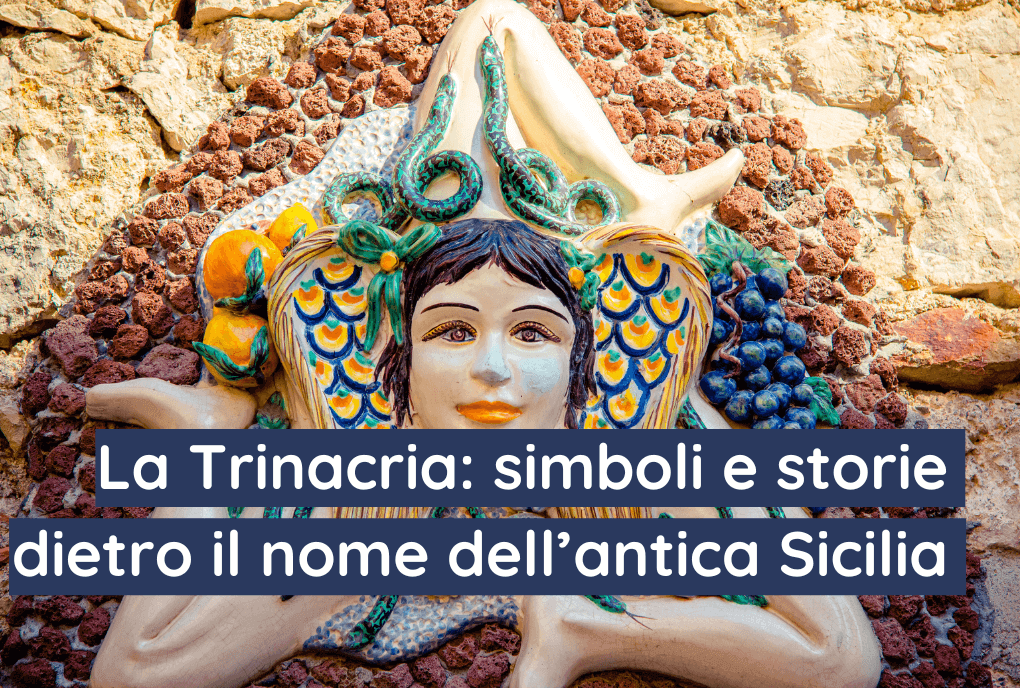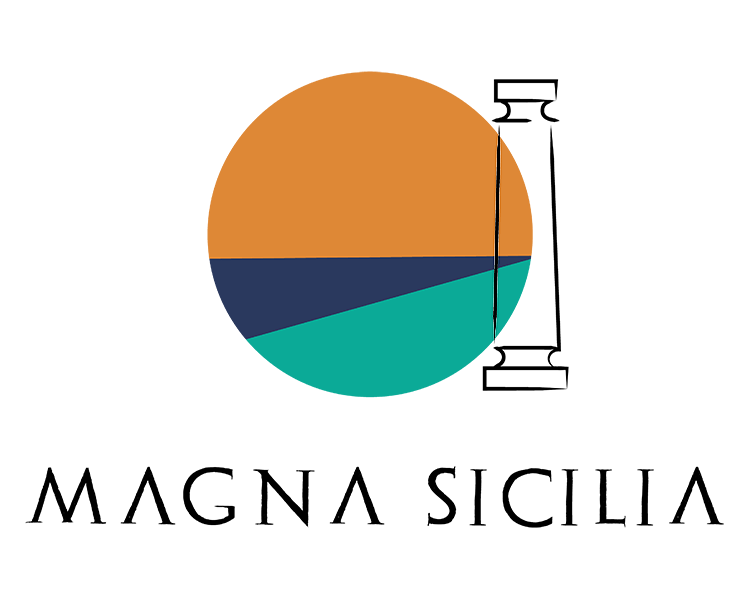
Trinacria: symbols and stories behind the name of ancient Sicily
In Sicily, there is a very recurring symbol, found not only in the region’s flag but also in textiles, ceramics, jewelry, magnets and postcards. It is the Trinacria, a three-legged head that perhaps represents in toto the true essence of this magical island.
A symbol that comes from afar
The symbol of Trinacria consists of the head of the Gorgon, one of the three monstrous sisters of Greek mythology (specifically, these are Medusa, Steno and Euryale, daughters of Phorcus and Ceto, two sea gods who were capable of petrifying anyone who looked into their eyes), from whose hair, made from snakes intertwined with ears of corn, radiate three legs bent.
The symbol has a very ancient origin: some coins found in Asia Minor and dating from the 6th and 4th centuries B.C. testify to its religious connotation, related to the sun god and his threefold representation of the seasons spring, summer and winter.
There is then a close relationship between Trinacria and ancient Greece: Spartan fighters drew the typical bent leg as a synonym for strength; Homer, moreover, in the Odyssey speaks of Thrinakie (from thrinax, “three-pointed”) alluding to the shape of the island.
The Greeks are thus credited with the arrival of Trinacria in Europe, until we then reach Roman times and see this figure lose its religious aspect and become a representative effigy of Sicily.
The meanings of the elements of Trinacria
The three elements that make up Trinacria, as anticipated, are:
- The head of the Gorgon, which is attributed to Medusa, the only one of the three non-immortal sisters, capable of petrifying anyone who looked at her. Medusa mainly represents theestrangement of evil, but somehow also a kind of magnetism that attracts tourists from all over the world.
- The ears of wheat, which are a symbol of fertility and of wealth of the island.
- The three legs, finally, which are the three headlands of the region: Cape Lilybaeum near Marsala, Cape Peloro in Messina, and Cape Passero to the south, beyond Syracuse. According to some, they also represent the cycle of life, between present, past and future.
The legend of the origin of ancient Sicily
There is a legend that is remade, unsurprisingly, to Greek mythology, which offers a more imaginative version on the origin of the name of ancient Sicily.
The myth tells of three beautiful nymphs, used to dance all over the world in search of earth, stones and ripe fruit to take with them.
One day they arrived at a place where the sky looked much bluer and clearer than usual, so much so that it made the dance of the nymphs lighter and more harmonious.
The three protagonists ended up throwing everything they had collected during their travels into the sea. Since that time, From the waves began to emerge a rich, fertile and fragrant land, from which were born and joined the three Sicilian mountains. Thus was born Sicily, with its characteristic triangular shape.
Trinacria, along with the Moor’s heads, the Sicilian cart and the Sicilian puppets, is another of the symbols that best expresses the true essence of Sicily: an island rich in history, influences of Greek myths, strong and extravagant.
by Beatrice Saura





